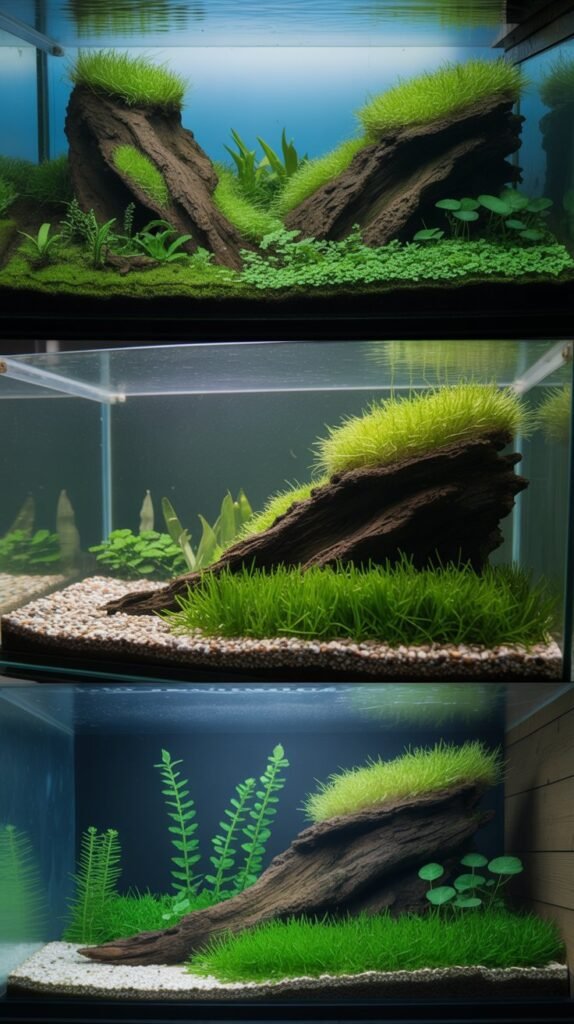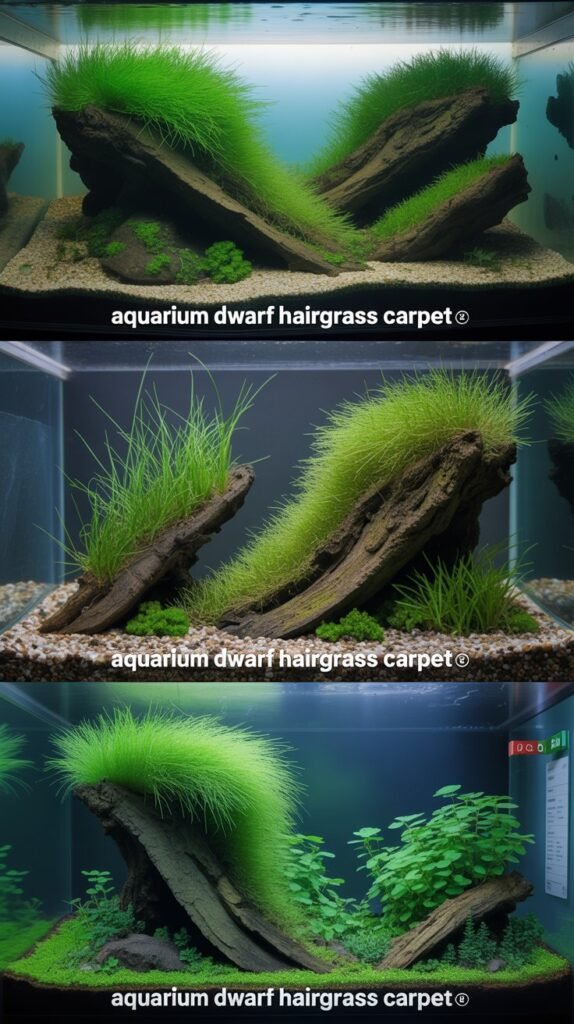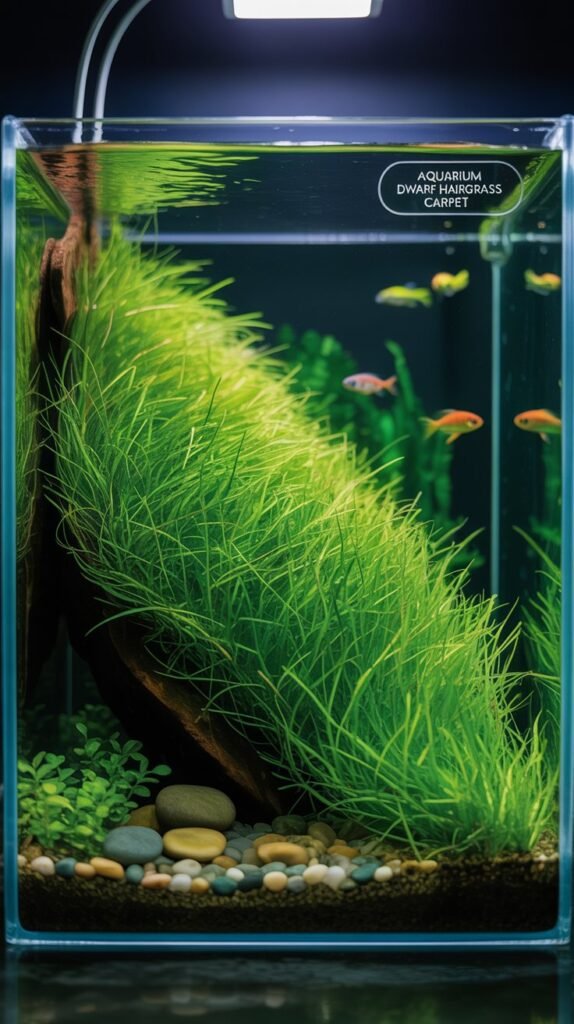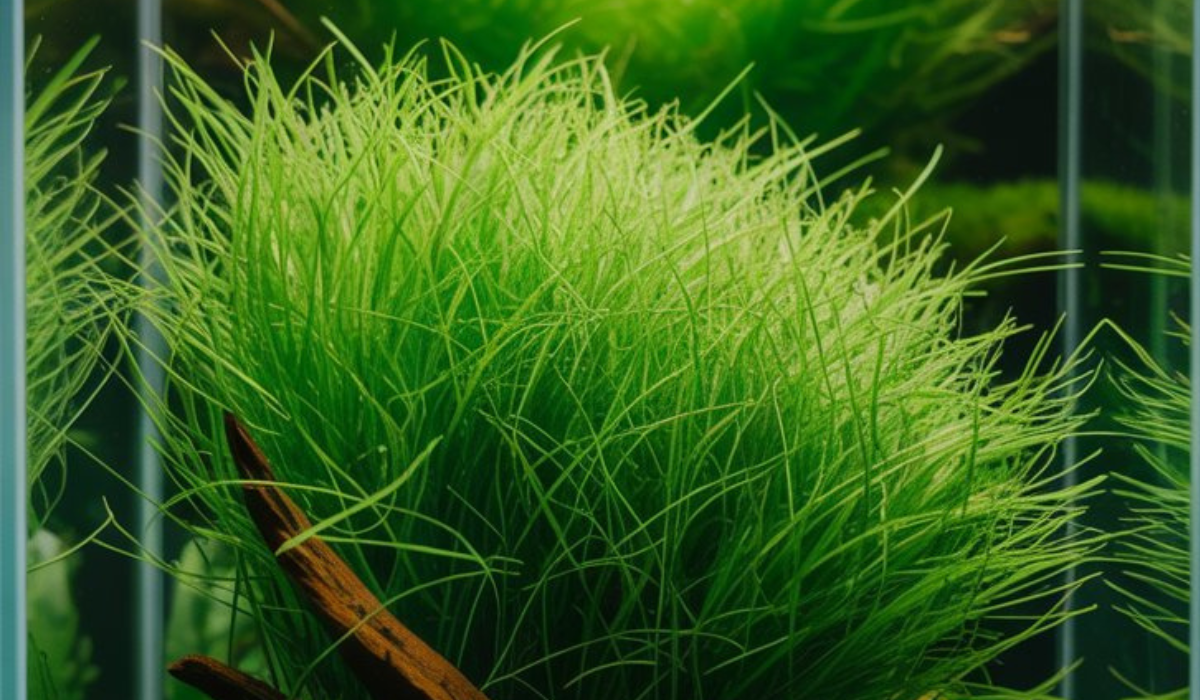Creating a lush underwater lawn in your aquarium is a dream for many aquascaping enthusiasts. The Dwarf Hairgrass carpet is one of the most popular choices for this — offering a vibrant green, natural look that enhances the aesthetics and health of your tank. Whether you’re a beginner aquarist or an experienced aquascaper, mastering Dwarf Hairgrass can elevate your aquarium’s beauty to the next level.
In this comprehensive guide, we’ll explore everything about Dwarf Hairgrass carpet—from planting and propagation to maintenance, lighting, CO₂, and common problems.
🌿 What Is Dwarf Hairgrass?
Dwarf Hairgrass (Eleocharis parvula or Eleocharis acicularis) is a carpeting plant from the family Cyperaceae. It’s native to many regions worldwide, including North America, Europe, and Asia, typically growing in shallow waters and wetlands.
Its grass-like leaves form a dense, low-growing carpet that resembles a miniature underwater meadow. This plant is a favorite among aquascapers for creating a natural, clean look in freshwater tanks.

There are two main species used in aquariums:
- Eleocharis parvula (Short Dwarf Hairgrass): Grows up to 4 cm tall, ideal for nano tanks.
- Eleocharis acicularis (Tall Dwarf Hairgrass): Can reach 10–15 cm, suitable for larger aquariums.
🌱 Benefits of Dwarf Hairgrass Carpet
Growing a Dwarf Hairgrass carpet doesn’t just beautify your tank — it also provides environmental and biological benefits.
1. Natural Filtration
The dense carpet traps debris and uneaten food, reducing ammonia and nitrate levels.
2. Oxygen Production
Like other aquatic plants, Dwarf Hairgrass contributes to oxygenation, improving water quality for fish and invertebrates.
3. Aesthetic Appeal
It creates a stunning, lush carpet effect, mimicking natural riverbeds or meadows.
4. Safe Habitat for Fry and Shrimp
The thick carpet provides shelter for baby fish and shrimp, protecting them from predators.
5. Prevents Algae Growth
Healthy, fast-growing Dwarf Hairgrass absorbs excess nutrients, minimizing algae blooms.
💡 Ideal Aquarium Conditions for Dwarf Hairgrass Carpet
For a successful carpet, you must provide optimal conditions that promote steady, healthy growth.
| Parameter | Ideal Range |
|---|---|
| Temperature | 20°C – 28°C (68°F – 82°F) |
| pH Level | 6.5 – 7.5 |
| Water Hardness | 2 – 12 dGH |
| Lighting | Medium to High |
| CO₂ Injection | Recommended but not mandatory |
| Tank Size | Any, from nano to large tanks |
🪴 How to Plant Dwarf Hairgrass Carpet

Planting correctly is crucial to ensure a dense, even carpet formation.
Step 1: Prepare the Substrate
Choose a nutrient-rich substrate like ADA Aqua Soil, Fluval Stratum, or Tropica Aquarium Soil. Dwarf Hairgrass roots need fine-grain soil to anchor properly.
Step 2: Divide the Plant
Instead of planting clumps, divide the Hairgrass into small tufts (4–6 blades each).
Step 3: Plant in a Grid
Using aquascaping tweezers, insert each tuft about 1 inch apart in a grid pattern. This allows them to spread evenly.
Step 4: Press Gently
Press each tuft down to ensure firm contact with the substrate to prevent floating.
Step 5: Fill the Aquarium Slowly
When adding water, pour it gently onto a rock or plate to avoid disturbing the planted tufts.
🌾 Growth and Propagation
Dwarf Hairgrass spreads by runners—thin shoots that grow horizontally under the substrate and sprout new tufts.
To encourage propagation:
- Maintain consistent CO₂ injection (20–30 ppm).
- Provide bright lighting for 8–10 hours daily.
- Keep nitrate levels moderate (10–20 ppm).
- Regularly trim to promote horizontal rather than vertical growth.
In optimal conditions, you can expect a full carpet within 4–8 weeks.
💧 Lighting and CO₂ Requirements
1. Lighting
Strong lighting is essential for compact, lush growth. Use full-spectrum LED lights designed for planted tanks, such as Chihiros, Twinstar, or Fluval Plant 3.0.
Avoid shadows or dim spots — Dwarf Hairgrass tends to grow upward and sparse in low light.
2. CO₂ Injection
Although Dwarf Hairgrass can survive without CO₂, it thrives when CO₂ is available. With proper CO₂, it spreads faster and produces denser carpets.
If you don’t use CO₂ injection, compensate with liquid carbon supplements and ensure good nutrient balance.
🧪 Fertilization
Dwarf Hairgrass benefits from both root and water column fertilization.
- Root Tabs: Supply essential nutrients like iron and potassium for root health.
- Liquid Fertilizers: Provide macro and micronutrients for overall plant growth.
Apply fertilizers weekly based on plant response and water change schedule.
✂️ Trimming and Maintenance
Trimming is a vital part of maintaining a Dwarf Hairgrass carpet.
Regular Trimming:
- Prevents leaves from overgrowing and blocking light.
- Encourages denser horizontal spreading.
- Keeps the aquarium visually balanced.
Trim once every 2–3 weeks using curved aquascaping scissors.
🦐 Tank Mates for Dwarf Hairgrass Carpet

Dwarf Hairgrass is compatible with most peaceful freshwater species.
Best Tank Mates:
- Shrimp: Amano Shrimp, Cherry Shrimp
- Snails: Nerite Snails, Mystery Snails
- Small Fish: Guppies, Tetras, Rasboras, Corydoras
- Bottom Dwellers: Otocinclus, Kuhli Loaches
Avoid large digging fish like Goldfish or Cichlids, as they may uproot the grass.
⚠️ Common Problems and Solutions
| Problem | Cause | Solution |
|---|---|---|
| Melting | Sudden change in water parameters | Gradual acclimation and stable conditions |
| Algae Growth | Too much light or nutrients | Maintain balance, add algae-eaters |
| Yellowing Tips | Nutrient deficiency | Add root tabs and liquid fertilizers |
| Floating Plants | Improper planting | Replant deeper and use fine substrate |
🧠 Advanced Aquascaping Tips with Dwarf Hairgrass
- Foreground Focus: Use Dwarf Hairgrass in the front for a clean, minimalistic look.
- Combine with Hardscape: Pair with driftwood, dragon stone, or Seiryu rock for contrast.
- Layering: Mix with other low plants like Monte Carlo or HC Cuba for a natural gradient.
- Create Paths: Trim certain sections shorter to form natural-looking trails or pathways.
🌍 Biotope Compatibility
Dwarf Hairgrass works beautifully in:
- Nature Aquariums – for a wild, natural feel
- Iwagumi Layouts – to highlight stones and balance composition
- Shrimp Tanks – offering cover and biofilm growth for shrimp
🕒 Timeline for Carpet Growth
| Time | Growth Stage |
|---|---|
| Week 1–2 | Root establishment |
| Week 3–4 | Runners start spreading |
| Week 5–6 | Dense patches form |
| Week 7–8 | Full carpet coverage |
💬 Expert Tips for Success
- Always quarantine plants before introducing them to your tank.
- Keep your filter flow gentle to prevent uprooting.
- Trim often to direct energy into horizontal spread.
- Use a photoperiod timer for consistent lighting.
- Combine with CO₂ and balanced fertilization for best results.
❓ FAQs About Dwarf Hairgrass Carpet
1. Is Dwarf Hairgrass good for beginners?
Yes! It’s beginner-friendly if you provide decent lighting and stable water conditions.
2. Does Dwarf Hairgrass need CO₂?
While not mandatory, CO₂ injection significantly improves growth speed and density.
3. How long does it take to carpet?
It typically takes 6–8 weeks under good lighting and CO₂ conditions.
4. Can I grow Dwarf Hairgrass without substrate?
It’s not ideal — it needs a fine, nutrient-rich substrate to anchor and spread.
5. Why is my Dwarf Hairgrass turning brown?
Possible reasons include poor lighting, lack of nutrients, or unstable water conditions.
6. Can Dwarf Hairgrass grow in a cold-water tank?
Yes, it can tolerate temperatures down to 20°C, but growth slows significantly.
7. How often should I trim it?
Trim every 2–3 weeks or when it starts to block light from reaching lower shoots.
🌿 Final Thoughts
The Dwarf Hairgrass carpet is a stunning addition to any planted aquarium. Its lush green appearance brings balance, vibrancy, and tranquility to your aquascape. With proper care—adequate lighting, nutrients, and trimming—you can achieve a breathtaking underwater lawn that enhances both aesthetics and ecosystem health.
Whether you’re designing a minimalist Iwagumi or a lush jungle tank, Dwarf Hairgrass is your go-to carpeting plant for a natural, professional look.

